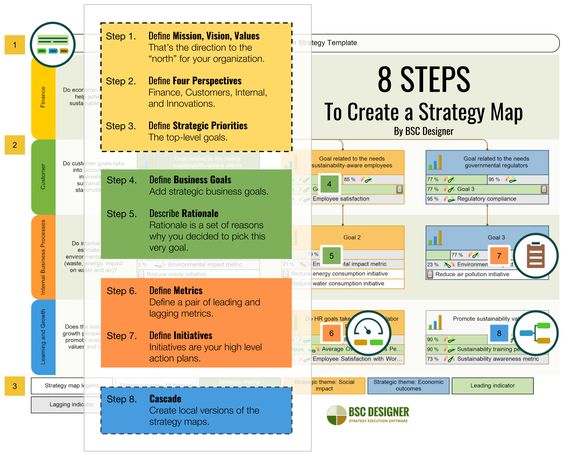Introduction: The process of strategic planning is crucial for the success of any organization, big or small. It helps organizations align their resources, establish long-term goals, and make informed decisions to achieve those goals. In this article, we’ll discuss the key components of effective strategic planning and provide a step-by-step guide to help you get started.
Assess Your Current Situation
In order to plan for the future, it is essential to understand where you stand in the present. This requires a thorough analysis of your current situation, including an assessment of your strengths, weaknesses, opportunities, and threats. By conducting a SWOT analysis, you can identify areas for improvement and set realistic goals for the future.
Define Your Vision, Mission, and Values
Having a clear vision, mission, and set of values will guide your decision-making and provide a framework for your planning process. Your vision should provide a picture of what you want to achieve in the future, your mission should explain why you exist, and your values should provide a basis for ethical decision-making.
Set Long-Term Goals
Once you have a clear understanding of your current situation and have defined your vision, mission, and values, you can set long-term goals that align with your overall objectives. These goals should be specific, measurable, attainable, relevant, and time-bound (SMART) and should be used to guide your decision-making process.
Develop Strategies to Achieve Your Goals
After setting your goals, you need to develop strategies to help you achieve them. These strategies should take into account your current situation, your available resources, and your desired outcomes. It is important to prioritize your strategies based on their potential impact and feasibility.
Allocate Resources
In order to successfully implement your strategies, you need to allocate the necessary resources, including time, money, and personnel. It is important to be realistic about what you can afford and to allocate your resources wisely.
Implement Your Plan
Once you have developed your strategies and allocated your resources, it is time to put your plan into action. This requires strong leadership and effective communication to ensure everyone understands their roles and responsibilities. It is also important to monitor progress and make adjustments as needed.
Evaluate Your Progress
Regularly evaluating your progress is essential to ensure that you are on track to achieve your goals. This requires monitoring key performance indicators (KPIs) and comparing them to your original objectives. Based on this evaluation, you can make adjustments to your strategies as needed to ensure continued success.
Continuously Adapt and Improve
Strategic planning is an ongoing process, and it is important to continuously adapt and improve. This requires regular review and evaluation of your progress, as well as an openness to new ideas and approaches. By being flexible and proactive, you can ensure your organization stays ahead of the curve.
You might find these FREE courses useful:
- Strategic Planning and Execution
- Top Strategic Planning And Execution Courses
- Essentials of Management and Strategic Planning
- Strategic Planning and Execution
- Top Essentials Of Management And Strategic
Conclusion: Effective strategic planning is a crucial component of organizational success. By following the steps outlined in this article, you can ensure that your organization has a clear vision, realistic goals, and a solid plan to achieve them. Remember, strategic planning is an ongoing process, and it is important to continuously adapt and improve to stay ahead of the competition.





